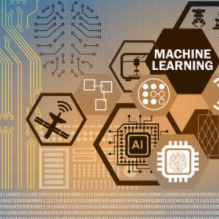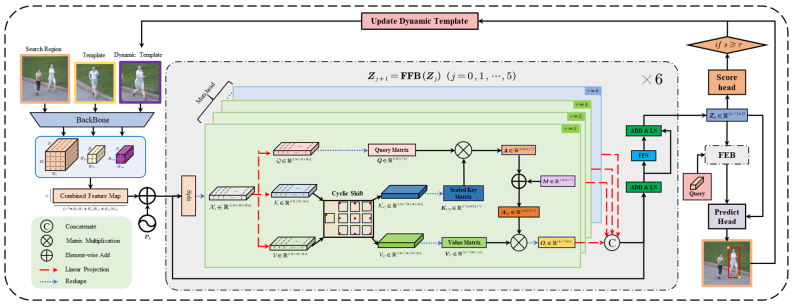1.
Introduction
In this paper, we consider the Schrödinger operators
where Δ=∑ni=1∂2∂2xi and V(x) is a nonnegative potential belonging to the reverse Hölder class RHq for some q≥n2. Assume that f is a nonnegative locally Lq(Rn) integrable function on Rn, then we say that f belongs to RHq (1<q≤∞) if there exists a positive constant C such that the reverse Hölder's inequality
holds for x in Rn, where B(x,r) denotes the ball centered at x with radius r<∞ [1]. For example, the nonnegative polynomial V∈RH∞, in particular, |x|2∈RH∞.
Let the potential V∈RHq with q≥n2, and the critical radius function ρ(x) is defined as
We also write ρ(x)=1mV(x),x∈Rn. Clearly, 0<mV(x)<∞ when V≠0, and mV(x)=1 when V=1. For the harmonic oscillator operator (Hermite operator) H=−Δ+|x|2, we have mV(x)∼(1+|x|).
Thanks to the heat diffusion semigroup e−tL for enough good function f, the negative powers L−α2(α>0) related to the Schrödinger operators L can be written as
Applying Lemma 3.3 in [2] for enough good function f holds that
and the kernel Kα(x,y) satisfies the following inequality
Moreover, we have Kα(x,y)≤C|x−y|n−α,0<α<n.
Shen [1] obtained Lp estimates of the Schrödinger type operators when the potential V∈RHq with q≥n2. For Schrödinger operators L=−Δ+V with V∈RHq for some q≥n2, Harboure et al. [3] established the necessary and sufficient conditions to ensure that the operators L−α2(α>0) are bounded from weighted strong and weak Lp spaces into suitable weighted BMOL(w) space and Lipschitz spaces when p≥nα. Bongioanni Harboure and Salinas proved that the fractional integral operator L−α/2 is bounded form Lp,∞(w) into BMOβL(w) under suitable conditions for weighted w [4]. For more backgrounds and recent progress, we refer to [5,6,7] and references therein.
Ramseyer, Salinas and Viviani in [8] studied the fractional integral operator and obtained the boundedness from strong and weak Lp(⋅) spaces into the suitable Lipschitz spaces under some conditions on p(⋅). In this article, our main interest lies in considering the properties of fractional integrals operator L−α2(α>0), related to L=−Δ+V with V∈RHq for some q≥n2 in variable exponential spaces.
We now introduce some basic properties of variable exponent Lebsegue spaces, which are used frequently later on.
Let p(⋅):Ω→[1,∞) be a measurable function. For a measurable function f on Rn, the variable exponent Lebesgue space Lp(⋅)(Ω) is defined by
where s is a positive constant. Then Lp(⋅)(Ω) is a Banach space equipped with the follow norm
We denote
Let P(Rn) denote the set of all measurable functions p on Rn that take value in [1,∞), such that 1<p−(Rn)≤p(⋅)≤p+(Rn)<∞.
Assume that p is a real value measurable function p on Rn. We say that p is locally log-Hölder continuous if there exists a constant C such that
and we say p is log-Hölder continuous at infinity if there exists a positive constant C such that
where p(∞):=lim|x|→∞p(x)∈R.
The notation Plog(Rn) denotes all measurable functions p in P(Rn), which states p is locally log-Hölder continuous and log-Hölder continuous at infinity. Moreover, we have that p(⋅)∈Plog(Rn), which implies that p′(⋅)∈Plog(Rn).
Definition 1.1. [8] Assume that p(⋅) is an exponent function on Rn. We say that a measurable function f belongs to Lp(⋅),∞(Rn), if there exists a constant C such that for t>0,
It is easy to check that Lp(⋅),∞(Rn) is a quasi-norm space equipped with the following quasi-norm
Next, we define LipLα,p(⋅) spaces related to the nonnegative potential V.
Definition 1.2. Let p(⋅) be an exponent function with 1<p−≤p+<∞ and 0<α<n. We say that a locally integrable function f∈LipLα,p(⋅)(Rn) if there exist constants C1,C2 such that for every ball B⊂Rn,
and for R≥ρ(x),
where mBf=1|B|∫Bf. The norm of space LipLα,p(⋅)(Rn) is defined as the maximum value of two infimum of constants C1 and C2 in (1.4) and (1.5).
Remark 1.1. LipLα,p(⋅)(Rn)⊂Lα,p(⋅)(Rn) is introduced in [8]. In particular, when p(⋅)=C for some constant, then LipLα,p(⋅)(Rn) is the usual weighted BMO space BMOβL(w), with w=1 and β=α−np [4].
Remark 1.2. It is easy to see that for some ball B, the inequality (1.5) leads to inequality (1.4) holding, and the average mBf in (1.4) can be replaced by a constant c in following sense
In 2013, Ramseyer et al. in [8] studied the Lipschitz-type smoothness of fractional integral operators Iα on variable exponent spaces when p+>αn. Hence, when p+>αn, it will be an interesting problem to see whether or not we can establish the boundedness of fractional integral operators L−α2(α>0) related to Schrödinger operators from Lebesgue spaces Lp(⋅) into Lipschitz-type spaces with variable exponents. The main aim of this article is to answer the problem above.
We now state our results as the following two theorems.
Theorem 1.3. Let potential V∈RHq for some q≥n/2 and p(⋅)∈Plog(Rn). Assume that 1<p−≤p+<n(α−δ0)+ where δ0=min{1,2−n/q}, then the fractional integral operator Iα defined in (1.2) is bounded from Lp(⋅)(Rn) into LipLα,p(⋅)(Rn).
Theorem 1.4. Let the potential V∈RHq with q≥n/2 and p(⋅)∈Plog(Rn). Assume that 1<p−≤p+<n(α−δ0)+ where δ0=min{1,2−n/q}. If there exists a positive number r0 such that p(x)≤p∞ when |x|>r0, then the fractional integral operator Iα defined in (1.2) is bounded from Lp(⋅),∞(Rn) into LipLα,p(⋅)(Rn).
To prove Theorem 1.3, we first need to decompose Rn into the union of some disjoint ball B(xk,ρ(xk))(k≥1) according to the critical radius function ρ(x) defined in (1.1). According to Lemma 2.6, we establish the necessary and sufficient conditions to ensure f∈LipLα,p(⋅)(Rn). In order to prove Theorem 1.3, by applying Corollary 1 and Remark 1.2, we only need to prove that the following two conditions hold:
(ⅰ) For every ball B=B(x0,r) with r<ρ(x0), then
(ⅱ) For any x0∈Rn, then
In order to check the conditions (ⅰ) and (ⅱ) above, we need to find the accurate estimate of kernel Kα(x,y) of fractional integral operator Iα (see Lemmas 2.8 and 2.9, then use them to obtain the proof of this theorem; the proof of the Theorem 1.4 proceeds identically).
The paper is organized as follows. In Section 2, we give some important lemmas. In Section 3, we are devoted to proving Theorems 1.3 and 1.4.
Throughout this article, C always means a positive constant independent of the main parameters, which may not be the same in each occurrence. B(x,r)={y∈Rn:|x−y|<r}, Bk=B(x0,2kR) and χBk are the characteristic functions of the set Bk for k∈Z. |S| denotes the Lebesgue measure of S. f∼g means C−1g≤f≤Cg.
2.
Some useful lemmas
In this section, we give several useful lemmas that are used frequently later on.
Lemma 2.1. [9] Assume that the exponent function p(⋅)∈P(Rn). If f∈Lp(⋅)(Rn) and g∈Lp′(⋅)(Rn), then
where rp=1+1/p−−1/p+.
Lemma 2.2. [8] Assume that p(⋅)∈Plog(Rn) and 1<p−≤p+<∞, and p(x)≤p(∞) when |x|>r0>1. For every ball B and f∈Lp(⋅),∞ we have
where the constant C only depends on r0.
Fo the following lemma see Corollary 4.5.9 in [10].
Lemma 2.3. Let p(⋅)∈Plog(Rn), then for every ball B⊂Rn we have
and
Lemma 2.4. Assume that p(⋅)∈Plog(Rn), then for all balls B and all measurable subsets S:=B(x0,r0)⊂B:=B(x1,r1) we have
Proof. We only prove the first inequality in (2.1), and the second inequality in (2.1) proceeds identically. We consider three cases below by applying Lemma 2.3, and it holds that
1) if |S|<1<|B|, then ‖χS‖p′(⋅)‖χB‖p′(⋅)∼|S|1p′(xS)|B|1p′(∞)≤(|S||B|)1(p′)+=(|S||B|)1−1p−;
2) if 1≤|S|<|B|, then ‖χS‖p′(⋅)‖χB‖p′(⋅)∼|S|1p′(∞)|B|1p′(∞)≤(|S||B|)1(p′)+=(|S||B|)1−1p−;
3) if |S|<|B|<1, then ‖χS‖p′(⋅)‖χB‖p′(⋅)∼|S|1p′(xS)|B|1p′(xS)|B|1p′(xS)−1p′(xB)≤C(|S||B|)1(p′)+=C(|S||B|)1−1p−, where xS∈S and xB∈B.
Indeed, since |xB−xS|≤2r1, by using the local-Hölder continuity of p′(x) we have
We end the proof of this lemma.
Remark 2.1. Thanks to the second inequality in (2.1), it is easy to prove that
Lemma 2.5. [1] Suppose that the potential V∈Bq with q≥n/2, then there exists positive constants C and k0 such that
1) ρ(x)∼ρ(y) when |x−y|≤Cρ(x);
2) C−1ρ(x)(1+|x−y|ρ(x))−k0≤ρ(y)≤Cρ(x)(1+|x−y|ρ(x))k0/(k0+1).
Lemma 2.6. [11] There exists a sequence of points {xk}∞k=1 in Rn such that Bk:=B(xk,ρ(xk)) satisfies
1) Rn=⋃kBk,
2) For every k≥1, then there exists N≥1 such that card {j:4Bj∩4Bk≠∅}≤N.
Lemma 2.7. Assume that p(⋅)∈P(Rn) and 0<α<n. Let sequence {xk}∞k=1 satisfy the propositions of Lemma 2.6. Then a function f∈LipLα,p(⋅)(Rn) if and only if f satisfies (1.4) for every ball, and
Proof. Let B:=B(x,R) denote a ball with center x and radius R>ρ(x). Noting that f satisfies (1.4), and thanks to Lemma 2.6 we obtain that the set G={k:B∩Bk≠∅} is finite.
Applying Lemma 2.5, if z∈Bk∩B, we get
Thus, for every k∈G, we have Bk⊂CB.
Thanks to Lemmas 2.4 and 2.6, it holds that
The proof of this lemma is completed.
Corollary 1. Assume that p(⋅)∈P(Rn) and 0<α<n, then a measurable function f∈LipLα,p(⋅) if and only if f satisfies (1.4) for every ball B(x,R) with radius R<ρ(x) and
Let kt(x,y) denote the kernel of heat semigroup e−tL associated to L, and Kα(x,y) be the kernel of fractional integral operator Iα, then it holds that
Some estimates of kt are presented below.
Lemma 2.8. [12] There exists a constant C such that for N>0,
Lemma 2.9. [13] Let 0<δ<min(1,2−nq). If |x−x0|<√t, then for N>0 the kernel kt(x,y) defined in (2.4) satisfies
for all x,y and x0 in Rn.
3.
Proof of theorems
In this section, we are devoted to the proof of Theorems 1.3 and 1.4. To prove Theorem 1.3, thanks to Corollary 1 and Remark 1.2, we only need to prove that the following two conditions hold:
(ⅰ) For every ball B=B(x0,r) with r<ρ(x0), then
(ⅱ) For any x0∈Rn, then
We now begin to check that these conditions hold. First, we prove (ⅱ).
Assume that B=B(x0,R) and R=ρ(x0). We write f=f1+f2, where f1=fχ2B and f2=fχRn∖2B. Hence, by the inequality (1.3), we have
Applying Tonelli theorem, Lemma 2.1 and Remark 1.2, we get the following estimate
To deal with f2, let x∈B and we split Iαf2 as follows:
For I1, if x∈B and y∈Rn∖2B, we note that |x0−y|<|x0−x|+|x−y|<C|x−y|. By Lemma 2.8, it holds that
where the constant C only depends the constant M.
Applying Lemma 2.1 to the last integral, we get
By using Lemma 2.4, we arrive at the inequality
Here, the series above converges when M>n−np+. Hence, for such M,
For I2, thanks to Lemma 2.8, we may choose M as above and N≥M, then it holds that
As x∈B, thanks to Lemma 2.5, ρ(x)∼ρ(x0)=R. Hence we have
Since M+α−n−N<0, the integral above for variable t converges, and by applying inequality (3.2) we have
thus we have proved (ⅱ).
We now begin to prove that the condition (ⅰ) holds. Let B=B(x0,r) and r<ρ(x0). We set f=f1+f2 with f1=fχ2B and f2=fχRn∖2B. We write
Thanks to (3.1), it holds that
Let x∈B and we split Iαf2(x) as follows:
For I3, by the same argument it holds that
For I4, by Lemma 2.9 and (3.3), it follows that
Let s=|x−y|2t, then we obtain the following estimate
Notice that the integral above for variable s is finite, thus we only need to compute the integral above for variable y. Thanks to inequality (3.2), it follows that
so (ⅰ) is proved.
Remark 3.1. By the same argument as the proof of Theorem 1.3, thanks to Lemma 2.2 we immediately obtained that the conclusions of Theorem 1.4 hold.
Use of AI tools declaration
The authors declare they have not used Artificial Intelligence (AI) tools in the creation of this article.
Acknowledgments
Ping Li is partially supported by NSFC (No. 12371136). The authors would like to thank the anonymous referees for carefully reading the manuscript and providing valuable suggestions, which substantially helped in improving the quality of this paper. We also thank Professor Meng Qu for his useful discussions.
Conflict of interest
The authors declare there are no conflicts of interest.


























 DownLoad:
DownLoad: